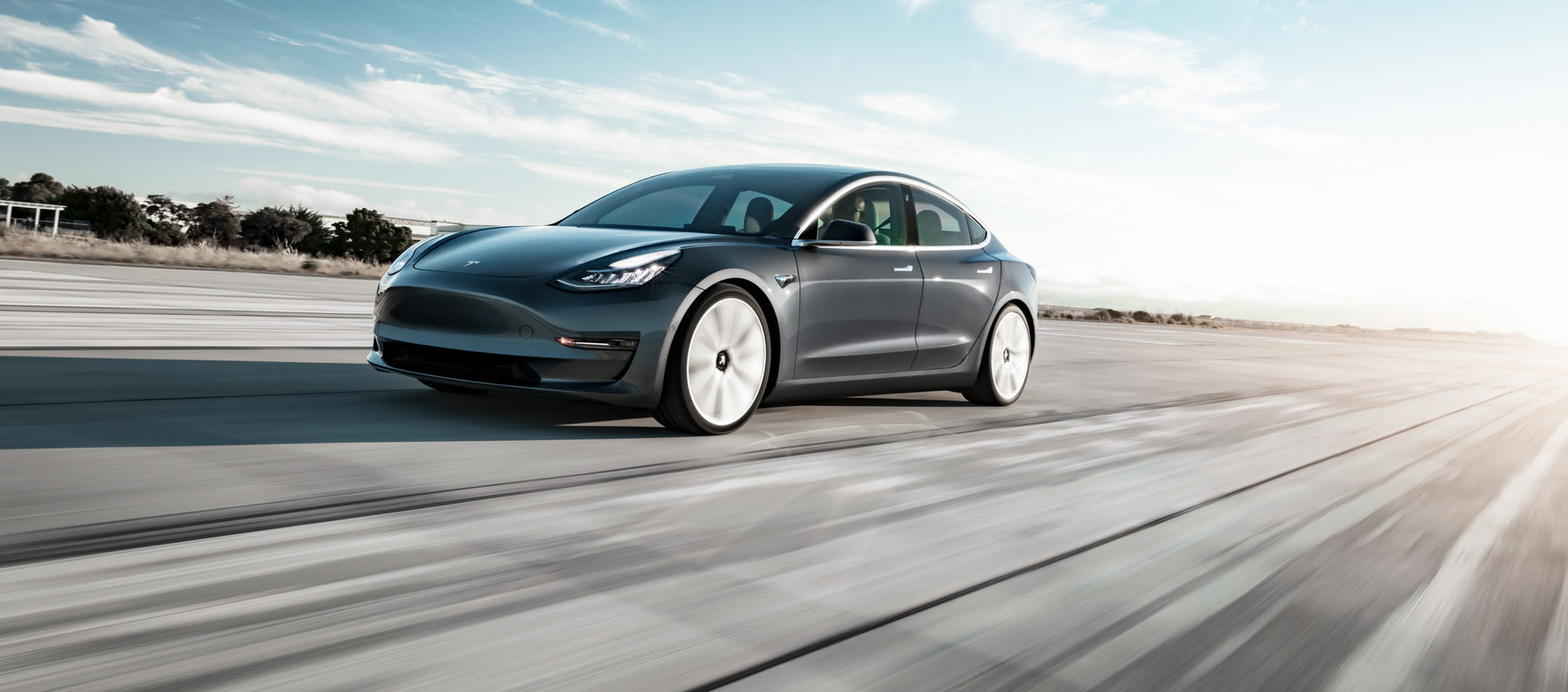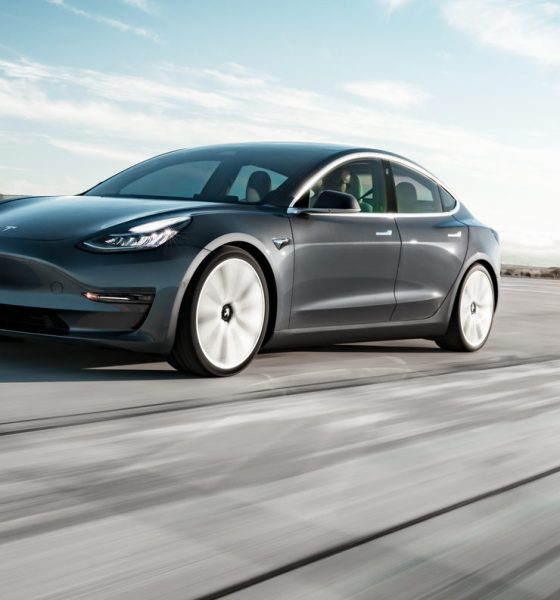

Investor's Corner
TSLA’s resilience in the stock market is partly due to the ‘Tesla Killers” failure
To say that the last few months have been a roller coaster ride for Tesla is an understatement. Just a few months ago, Tesla stock (NASDAQ:TSLA) was closing in on trading below $250 per share, and it was being bashed by a continuous stream of criticism from Wall Street. One analyst even called Tesla “no longer investable” due to Elon Musk’s behavior on Twitter. Short-sellers bet on a dramatic drop, with one stating that it was apparent “Tesla is having difficulties paying their bills.”
And yet, no dramatic drop happened. The company surprised Wall Street by posting $6.8 billion in revenue in the third quarter instead, and the stock has been up since then. Today, TSLA is trading near the $370 level, close to the highs it achieved on the day Elon Musk posted his now-infamous “funding secured” tweet. After a year of volatility, Tesla stock is up nearly 18% as of Wednesday’s close. That’s quite notable, considering that the S&P 500 is down 1.4% this year so far.
Apart from the company’s improving fundamentals, a good part of the Tesla narrative today is the company’s lead in the electric car market. One of the most notable bear thesis against the company is the notion that once legacy automakers decide to dip their feet into the production of EVs, Tesla would be overwhelmed and outgunned. Several automakers did release their first premium all-electric cars this year. But instead of overwhelming Tesla with their expertise (hence the term “Tesla Killer”), legacy auto’s first EVs have fallen short of the standards set by the Silicon Valley-based electric car maker.
In a recent note, Oppenheimer analyst Colin Rusch admonished traditional carmakers and their electric creations, stating that they present what could be described as a “slow and disappointing” competition for Tesla. JMP Securities analyst Joseph Osha was a bit more direct than Rusch, remarking that “It is incredible to me, at the end of 2018, that the major automakers still haven’t figured out how to respond competitively to Tesla.”
Tesla’s vehicles compete on the luxury segment, where brands such as Mercedes-Benz, BMW, and Audi are reigning. This year, three notable premium electric cars emerged by legacy carmakers — the Mercedes-Benz EQC, the Audi e-tron, and the Jaguar I-PACE — and while each is an admirable vehicle on their own, the EVs themselves include flaws that make them inferior to Tesla. Both the EQC and the e-tron incited questions about their real range when the vehicles were unveiled, and the Jaguar I-PACE, despite being well-received by critics, is far less efficient than an older Tesla Model X.
Tesla’s lead in the electric car segment was even acknowledged by UBS, which has a history of taking a bearish stance on the electric car maker. Following a teardown of the vehicle and a comparison between the Model 3 and competitors like the BMW i3 and the Chevy Bolt, UBS concluded that instead of being the underdog in the EV market, “Tesla has won the race and leads the championship,” thanks to its superior battery, powertrain, and overall tech.
As Tesla approaches the end of what could be yet another impressive quarter, the company continues to garner votes of confidence from Wall Street. Just recently, Baird analyst Ben Kallo reiterated his “Outperform” rating on TSLA stock while raising his price target from $411 to $465. Kallo cited the strengthening narrative surrounding the company, which changed from negative to positive in recent months.
“We believe the narrative will continue to change from ‘TSLA will never make money’ to ‘TSLA can be sustainably profitable,’” Kallo wrote in a note Thursday. “The narrative on TSLA, particularly in the middle of 2018, was as negative as we have experienced in our coverage, but we believe sentiment will continue to improve as the company proves it can be self-supportive, which should drive sustained share appreciation,” Kallo wrote.
With competitors only highlighting Tesla’s lead in the EV market, the potential of Tesla in the global stage remains vast. The Model 3 alone, which continues to sell well despite the US’ preference for pickup trucks and SUVs, is expected to be popular in Europe, whose sedan market is notably larger than that of America. With these factors in play, as well as the absence of notable competition from fellow luxury carmakers in the near future, the next year could prove to be one impressive ride for Tesla.
As of writing, Tesla is trading +1.20% at $371.01 per share.
Disclosure: I have no ownership in shares of TSLA and have no plans to initiate any positions within 72 hours.

Investor's Corner
Tesla stock closes at all-time high on heels of Robotaxi progress

Tesla stock (NASDAQ: TSLA) closed at an all-time high on Tuesday, jumping over 3 percent during the day and finishing at $489.88.
The price beats the previous record close, which was $479.86.
Shares have had a crazy year, dipping more than 40 percent from the start of the year. The stock then started to recover once again around late April, when its price started to climb back up from the low $200 level.
This week, Tesla started to climb toward its highest levels ever, as it was revealed on Sunday that the company was testing driverless Robotaxis in Austin. The spike in value pushed the company’s valuation to $1.63 trillion.
Tesla Robotaxi goes driverless as Musk confirms Safety Monitor removal testing
It is the seventh-most valuable company on the market currently, trailing Nvidia, Apple, Alphabet (Google), Microsoft, Amazon, and Meta.
Shares closed up $14.57 today, up over 3 percent.
The stock has gone through a lot this year, as previously mentioned. Shares tumbled in Q1 due to CEO Elon Musk’s involvement with the Department of Government Efficiency (DOGE), which pulled his attention away from his companies and left a major overhang on their valuations.
However, things started to rebound halfway through the year, and as the government started to phase out the $7,500 tax credit, demand spiked as consumers tried to take advantage of it.
Q3 deliveries were the highest in company history, and Tesla responded to the loss of the tax credit with the launch of the Model 3 and Model Y Standard.
Additionally, analysts have announced high expectations this week for the company on Wall Street as Robotaxi continues to be the focus. With autonomy within Tesla’s sights, things are moving in the direction of Robotaxi being a major catalyst for growth on the Street in the coming year.
Elon Musk
Tesla needs to come through on this one Robotaxi metric, analyst says
“We think the key focus from here will be how fast Tesla can scale driverless operations (including if Tesla’s approach to software/hardware allows it to scale significantly faster than competitors, as the company has argued), and on profitability.”

Tesla needs to come through on this one Robotaxi metric, Mark Delaney of Goldman Sachs says.
Tesla is in the process of rolling out its Robotaxi platform to areas outside of Austin and the California Bay Area. It has plans to launch in five additional cities, including Houston, Dallas, Miami, Las Vegas, and Phoenix.
However, the company’s expansion is not what the focus needs to be, according to Delaney. It’s the speed of deployment.
The analyst said:
“We think the key focus from here will be how fast Tesla can scale driverless operations (including if Tesla’s approach to software/hardware allows it to scale significantly faster than competitors, as the company has argued), and on profitability.”
Profitability will come as the Robotaxi fleet expands. Making that money will be dependent on when Tesla can initiate rides in more areas, giving more customers access to the program.
There are some additional things that the company needs to make happen ahead of the major Robotaxi expansion, one of those things is launching driverless rides in Austin, the first city in which it launched the program.
This week, Tesla started testing driverless Robotaxi rides in Austin, as two different Model Y units were spotted with no occupants, a huge step in the company’s plans for the ride-sharing platform.
Tesla Robotaxi goes driverless as Musk confirms Safety Monitor removal testing
CEO Elon Musk has been hoping to remove Safety Monitors from Robotaxis in Austin for several months, first mentioning the plan to have them out by the end of 2025 in September. He confirmed on Sunday that Tesla had officially removed vehicle occupants and started testing truly unsupervised rides.
Although Safety Monitors in Austin have been sitting in the passenger’s seat, they have still had the ability to override things in case of an emergency. After all, the ultimate goal was safety and avoiding any accidents or injuries.
Goldman Sachs reiterated its ‘Neutral’ rating and its $400 price target. Delaney said, “Tesla is making progress with its autonomous technology,” and recent developments make it evident that this is true.
Investor's Corner
Tesla gets bold Robotaxi prediction from Wall Street firm
Last week, Andrew Percoco took over Tesla analysis for Morgan Stanley from Adam Jonas, who covered the stock for years. Percoco seems to be less optimistic and bullish on Tesla shares, while still being fair and balanced in his analysis.

Tesla (NASDAQ: TSLA) received a bold Robotaxi prediction from Morgan Stanley, which anticipates a dramatic increase in the size of the company’s autonomous ride-hailing suite in the coming years.
Last week, Andrew Percoco took over Tesla analysis for Morgan Stanley from Adam Jonas, who covered the stock for years. Percoco seems to be less optimistic and bullish on Tesla shares, while still being fair and balanced in his analysis.
Percoco dug into the Robotaxi fleet and its expansion in the coming years in his latest note, released on Tuesday. The firm expects Tesla to increase the Robotaxi fleet size to 1,000 vehicles in 2026. However, that’s small-scale compared to what they expect from Tesla in a decade.
Tesla expands Robotaxi app access once again, this time on a global scale
By 2035, Morgan Stanley believes there will be one million Robotaxis on the road across multiple cities, a major jump and a considerable fleet size. We assume this means the fleet of vehicles Tesla will operate internally, and not including passenger-owned vehicles that could be added through software updates.
He also listed three specific catalysts that investors should pay attention to, as these will represent the company being on track to achieve its Robotaxi dreams:
- Opening Robotaxi to the public without a Safety Monitor. Timing is unclear, but it appears that Tesla is getting closer by the day.
- Improvement in safety metrics without the Safety Monitor. Tesla’s ability to improve its safety metrics as it scales miles driven without the Safety Monitor is imperative as it looks to scale in new states and cities in 2026.
- Cybercab start of production, targeted for April 2026. Tesla’s Cybercab is a purpose-built vehicle (no steering wheel or pedals, only two seats) that is expected to be produced through its state-of-the-art unboxed manufacturing process, offering further cost reductions and thus accelerating adoption over time.
Robotaxi stands to be one of Tesla’s most significant revenue contributors, especially as the company plans to continue expanding its ride-hailing service across the world in the coming years.
Its current deployment strategy is controlled and conservative to avoid any drastic and potentially program-ruining incidents.
So far, the program, which is active in Austin and the California Bay Area, has been widely successful.








